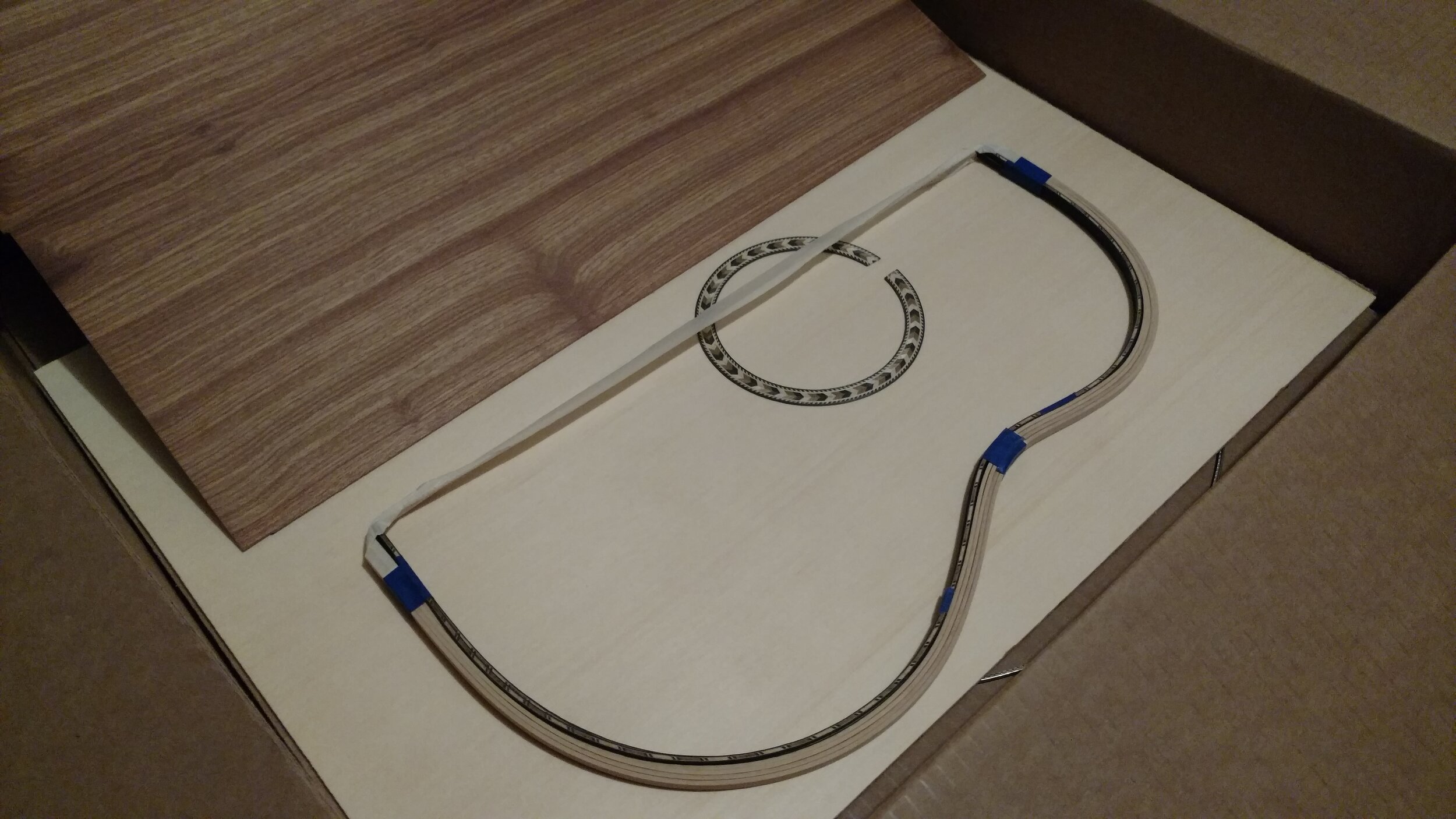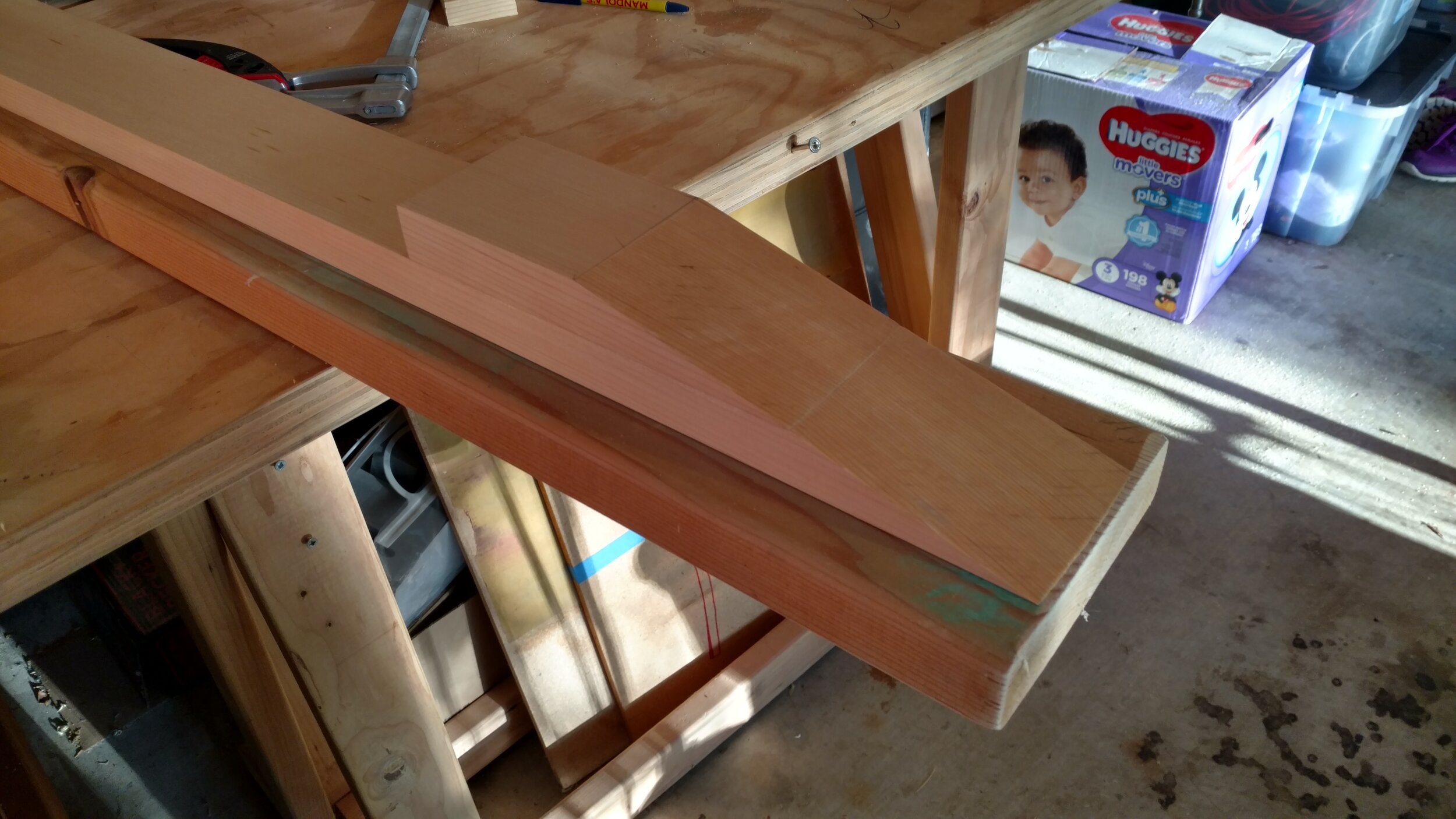Oct. 5, 2018
Drafted the outline of the body of the guitar and printed out on big paper. Created a template out of foam board and posterboard. Ordered all the materials— the front and back plates, side plates, the binding and purfling, the brace blanks— from a luthier supply company.
Nov. 8, 2018
Received the box of tonewood and binding. Here is the breakdown of wood that I selected for each part:
Soundboard: Yellow Cedar
Sides and Back: Bloodwood
Neck: Port Orford Cedar
Headpiece veneer: Bloodwood
Binding / Purfling: Natural binding, black/white/ brown purfling
Fretboard: East Indian Rosewood
Nov. 11, 2018
Made an angled cut into neck blank to create the joint between the neck and the headstock.
Nov. 18, 2018.
Stacked the headpiece blank on the neck to scrape and sand the joining pieces flush to one another.





